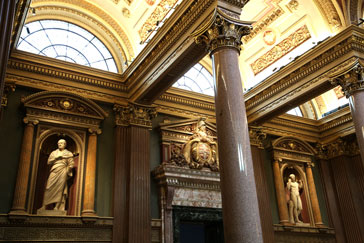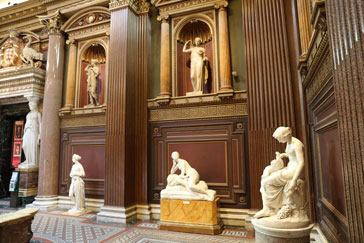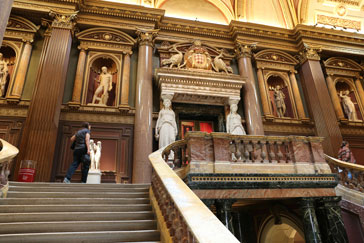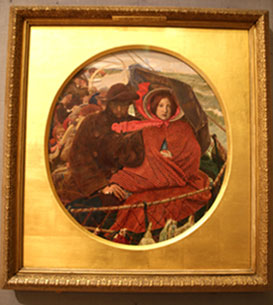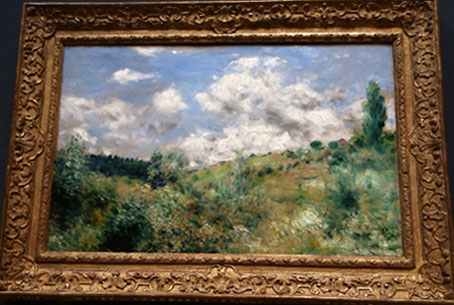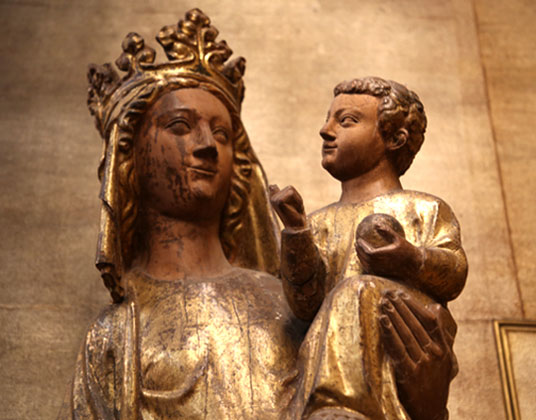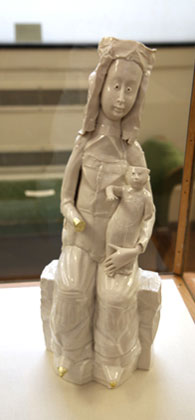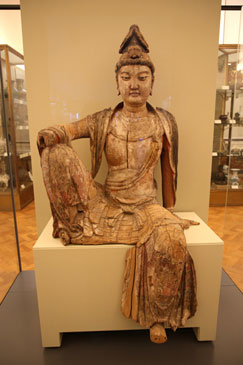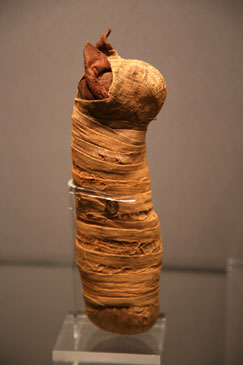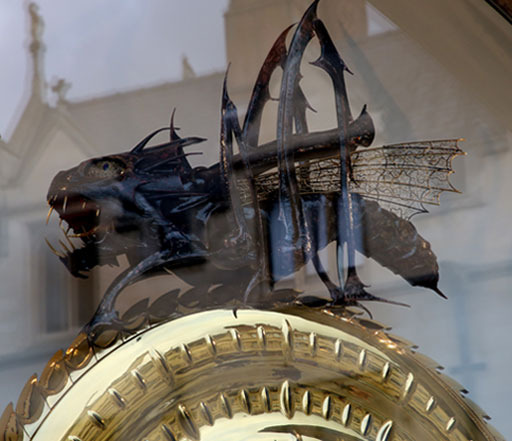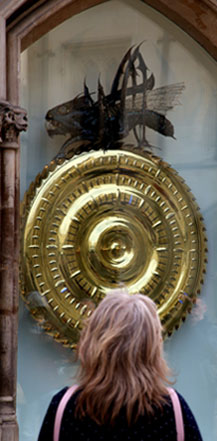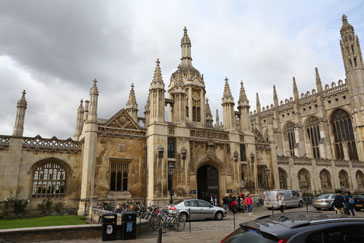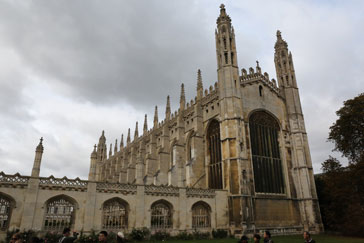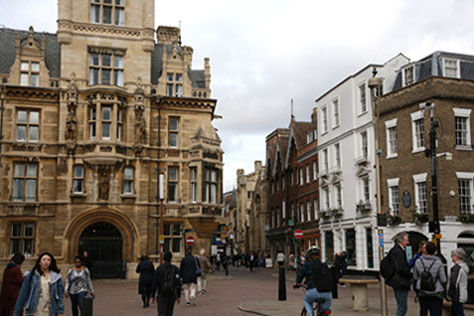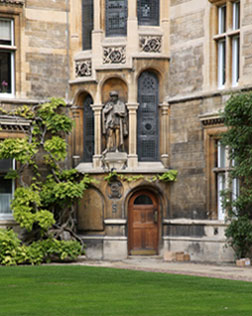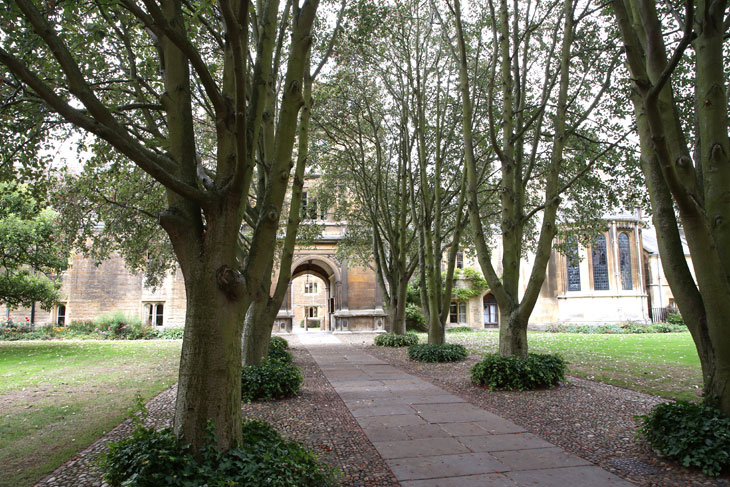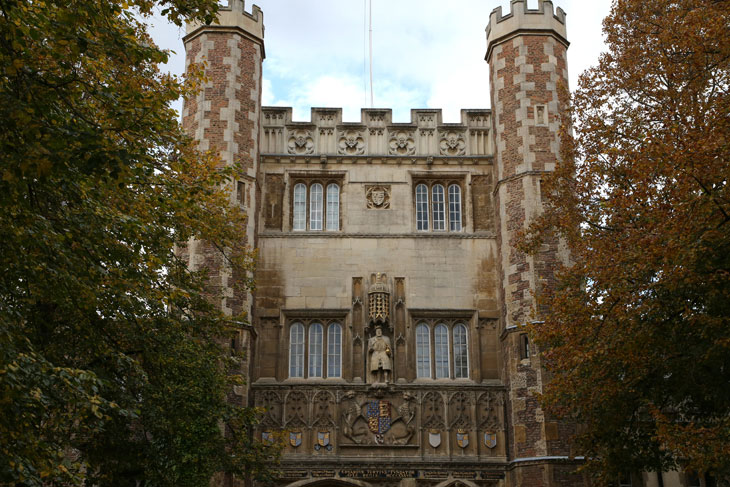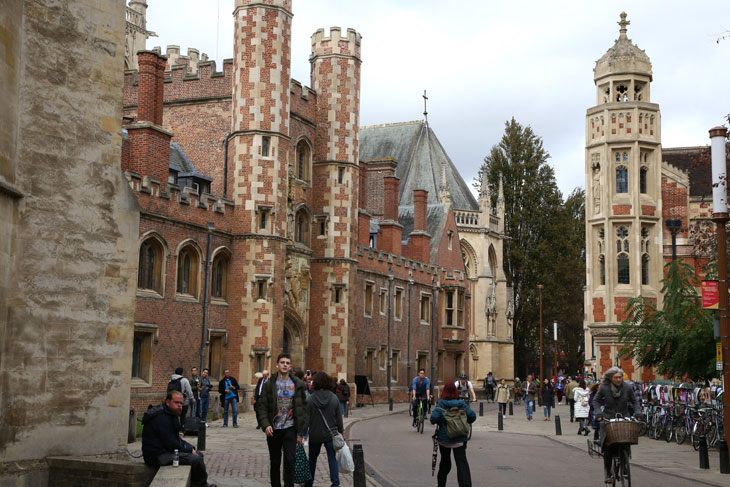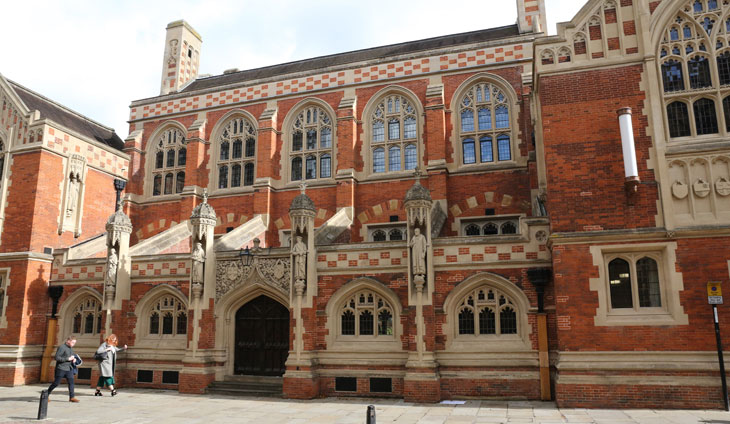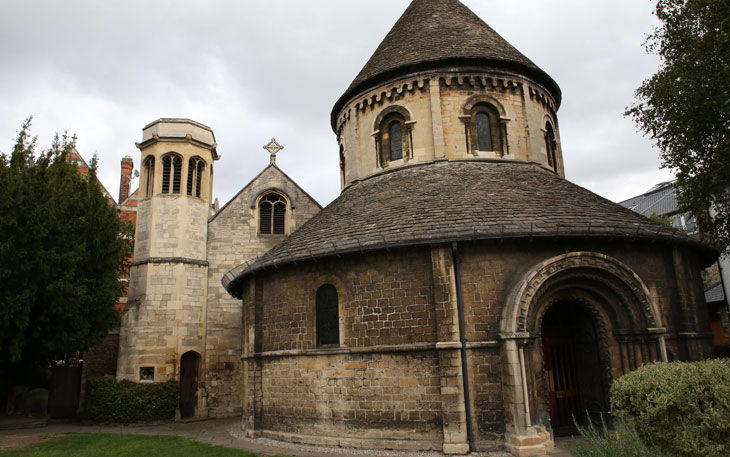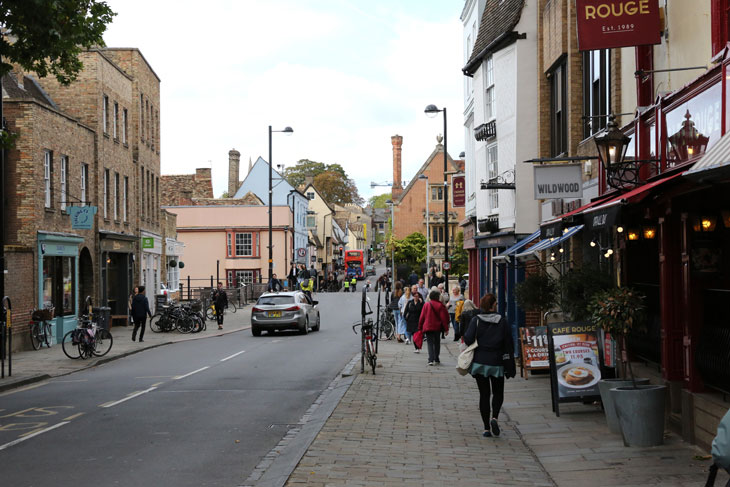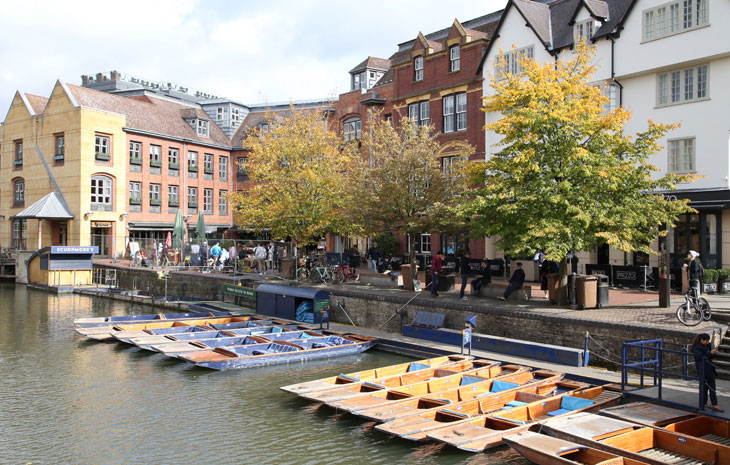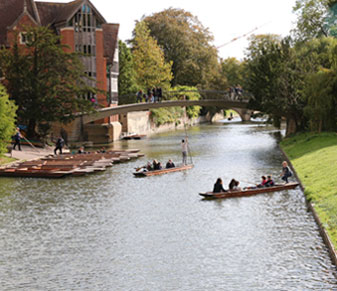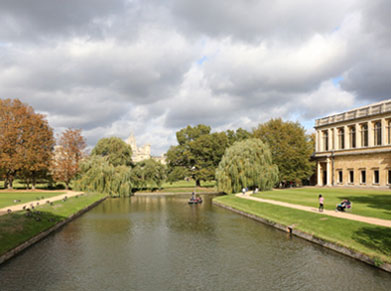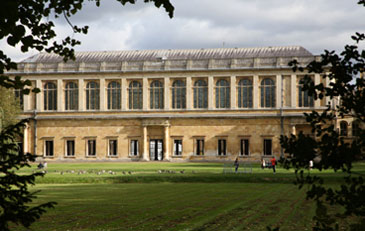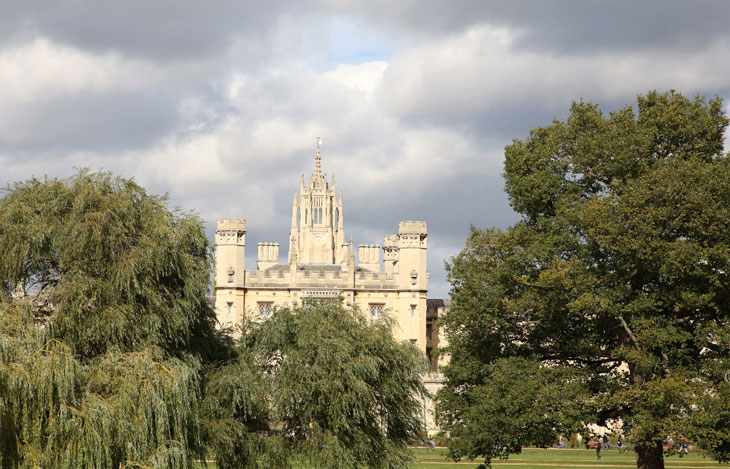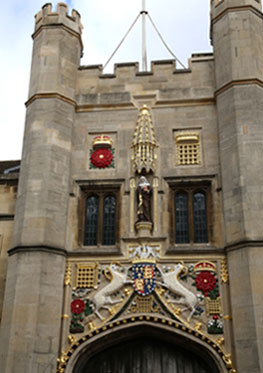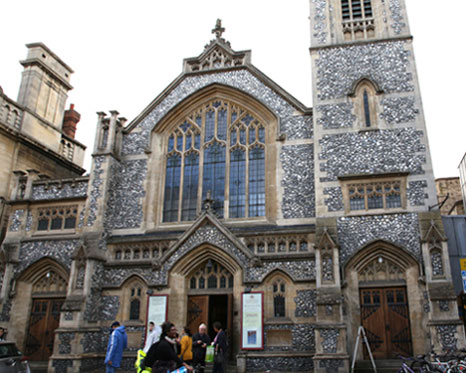Childhood Dreams
The Fitzwilliam Museum and The University of Cambridge
Oxford or Cambridge? The two cities aren't that far from each other and either could
be done on a day trip from London so theoretically it would have been possible to visit
both, but we don't enjoy rushing about trying to see everything. I'm usually happiest
when we're just bumbling about in a leisurely way.
Ultimately we decided to visit Cambridge this trip. We had no real plan for exploring
the city, but I consulted Lonely Planet which listed the highlights.
Our first stop was the extremely intersting Fitzwilliam Museum. The eclectic collection
dates from antiquity to the present day and includes works of art, historical artefacts,
and way more pottery than most people would ever want to see.
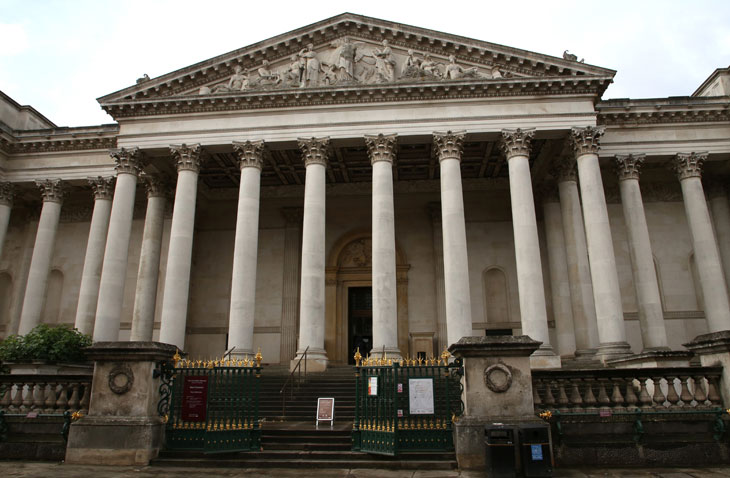
The front doors open onto a grand curving staircase, and statues line the walls of the very
impressive entry area. A group of school children were noisily settling in with their sketch
pads, their voices echoing off the walls and the high ceilings, impervious to their teachers
pleas for quiet. Their enthusiasm was infectious.
The painting on the left below is called The Last of England It was created by Ford
Madox Brown in 1860 and depicts emigrants leaving England for Australia and New Zealand. The
painting on the right is a Renoir entitied The Gust of Wind.
Here are two very different depictions of the Madonna and child.
The pictures below are of a Chinese Bodhisattva from the 13th Century, a portait of a woman
painted on a wooden panel that would have been placed over the face of a mummy dating from
around 100 AD, and a mummified cat from about 600 BC.
After spending an hour or so enjoying the museum, it was time to go outside and explore the
university/city. There is no actual campus in the American sense of the word. The college
buildings, town buildings, and shops all sort of blend together.
The university was founded in 1209 after two scholars at Oxford University were hanged for
the death of a woman. Normally the verdict would have been decided by ecclesiastical autorities
who would have pardoned the scholars, but that was not done in this case so many scholars left
Oxford for places like Paris or Cambridge in protest. Unfortunately this move did not end the
animosity between townspeople and academics in Oxford. It just extended it to Cambridge.
The architecture in Cambridge is amazing. Great St.
Mary's - the church of the University of Cambridge - is pictured on the right. In the middle
ages, it was the official gathering place for university meetings and debates.
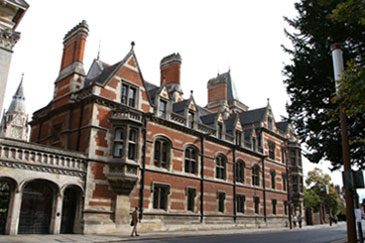
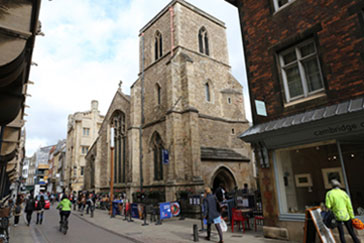
These are the best pictures I could get of the Corpus Clock at Corpus Christi College. The clock
was conceived and funded by John C. Taylor, an inventor, philanthropist, and graduate of the college.
Over 200 engineers, sculptors, scientists, jewellers, and calligraphers were involved in the clock's
creation.
A hideous creature called the Chronophage walks on a large gold plated disc. The clock, which is only
accurate once every five minutes, has no hands or numerals. It displays the time by opening individual
slits backlit with blue LEDs. Taylor conceived of the work as a terrifying reminder of the inevitable
passing of time.
The massive gothic cathedral is King's College Chapel. Its construction was begun in 1440 by
Henry VI and completed in 1516 by Henry VIII.
Gonville and Caius College is next to the cathedral. I couldn't resist wandering into its
lovely courtyard.
Trinity College, founded by Henry VIII, boasts a slew of famous alumni - A. A. Milne and his
son Christopher Robin, Francis Bacon, Lord Byron, Tennyson, and at least 9 prime ministers and
32 Nobel Prize winners.
The alluring St. John's College, alma mater of Douglas Adams, 6 prime ministers, and 3 saints,
sits next door.
The historic Church of the Holy Sepulchre, also called The Round Church, was built by the Knights
Templar in 1130.
We continued walking down Bridge Street towards the River Cam.
The area behind the colleges along the river is known as The Backs. Cruising down the river in
these narrow flat-bottomed boats called punts is a popular activity. We chose to walk through The
Backs rather than punt.
It was an interesting and enjoyable day. Here are a couple of other interesting places we passed
on the walk back to our hotel.


